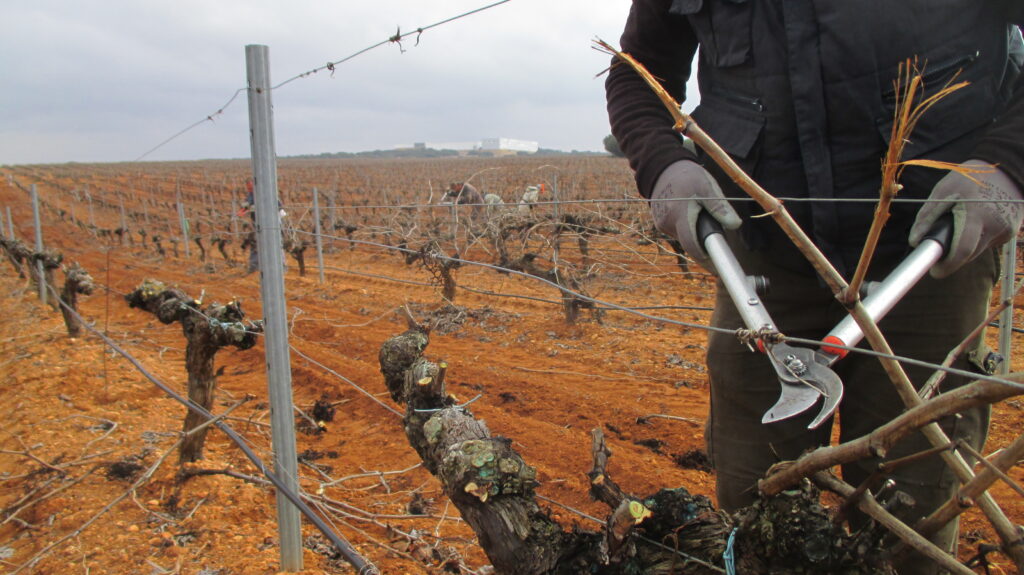Pruning is one of the most important tasks in the vine growing cycle. The pruning season begins after the first frosts in autumn or winter, when the leaves are falling and at the start of the winter rest period; it can last until the middle of March, in other words, before the plant wakes up and renews its life cycle.
Historically, it has been one of the most important jobs that vine-growers do, despite the fact that this technique has been documented since ancient times. This was probably as a consequence of the appetites of domestic animals, the Greeks, Romans and Arabs, observed that after the animals had eaten the thinnest parts of the vine shoots, the bunches and grapes picked in the following harvest were bigger.
Pruning enables us to position the vegetation; to regulate and balance the plant. In other words, the first consequence is that through pruning we can steer the plant towards a higher or controlled production, which is what we do at the wineries of Familia Martínez Bujanda. Obtaining wines with characteristics taken from the environment can only be achieved with balanced plants, with sufficient vegetation to withstand the adverse conditions of drought, for example, but also not so excessive that they ‘consume’ the sap and nutrients that the bunches and fruit require.
Pruning is a delicate operation, in that it is an ‘amputation’, which involves cutting organs from the plant. These wounds must be allowed to heal properly and even be disinfected using appropriate products. In this respect, we like to prune during the first cold spell of winter, that way the plant will be properly ‘cured’ when it renews its active cycle and the vine shoots will be dry when they are cut; ensuring clean shear cuts and subsequently correct healing. As a general rule, it is advisable to avoid foggy or particularly humid days when doing these tasks so as to facilitate the healing process.
We can distinguish several types of pruning: vine training, to train the plant in line with the trellis system; production pruning (which we do every winter in order to balance the plant); rejuvenation pruning, which involves cutting off the arms that are dry due to the age of the vine, disease or new vine shoots; and exceptional pruning, when we act due to enforced circumstances on vines which have suffered damage due to frost or hail, for example.
As a general rule, on weak vines and shoots we leave short spurs with few buds so that the plants produce very little and can recover, whilst on strong vines and shoots we do the opposite in order to control their vitality.
We have had a strange autumn and winter, amongst the warmest on record, also with limited water, and we will see whether the true winter weather returns in February or whether the current mild conditions continue and we have early budding. For now, the winter’s work, pruning, is done and we will see how and when the plants wake up from their dormancy.






